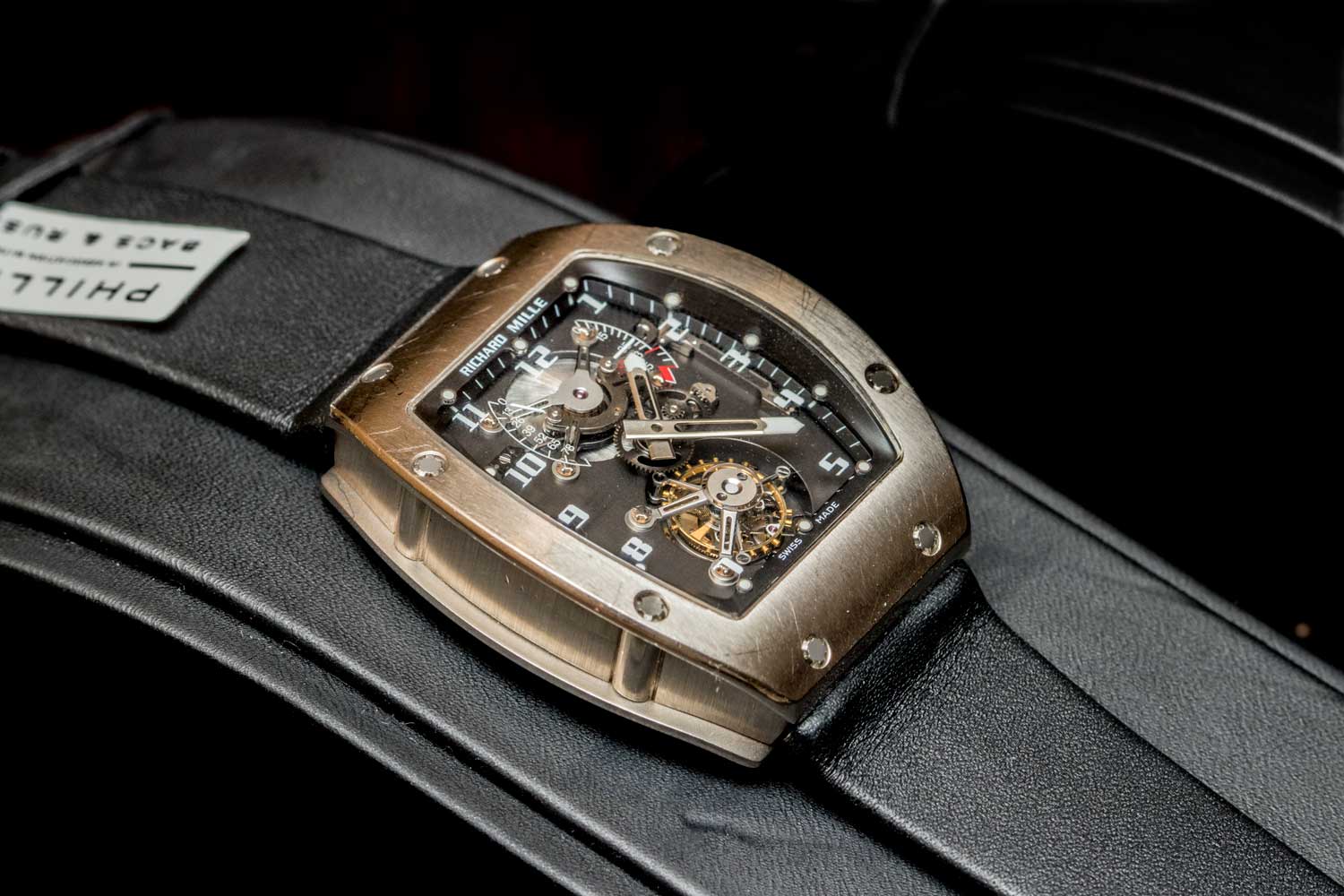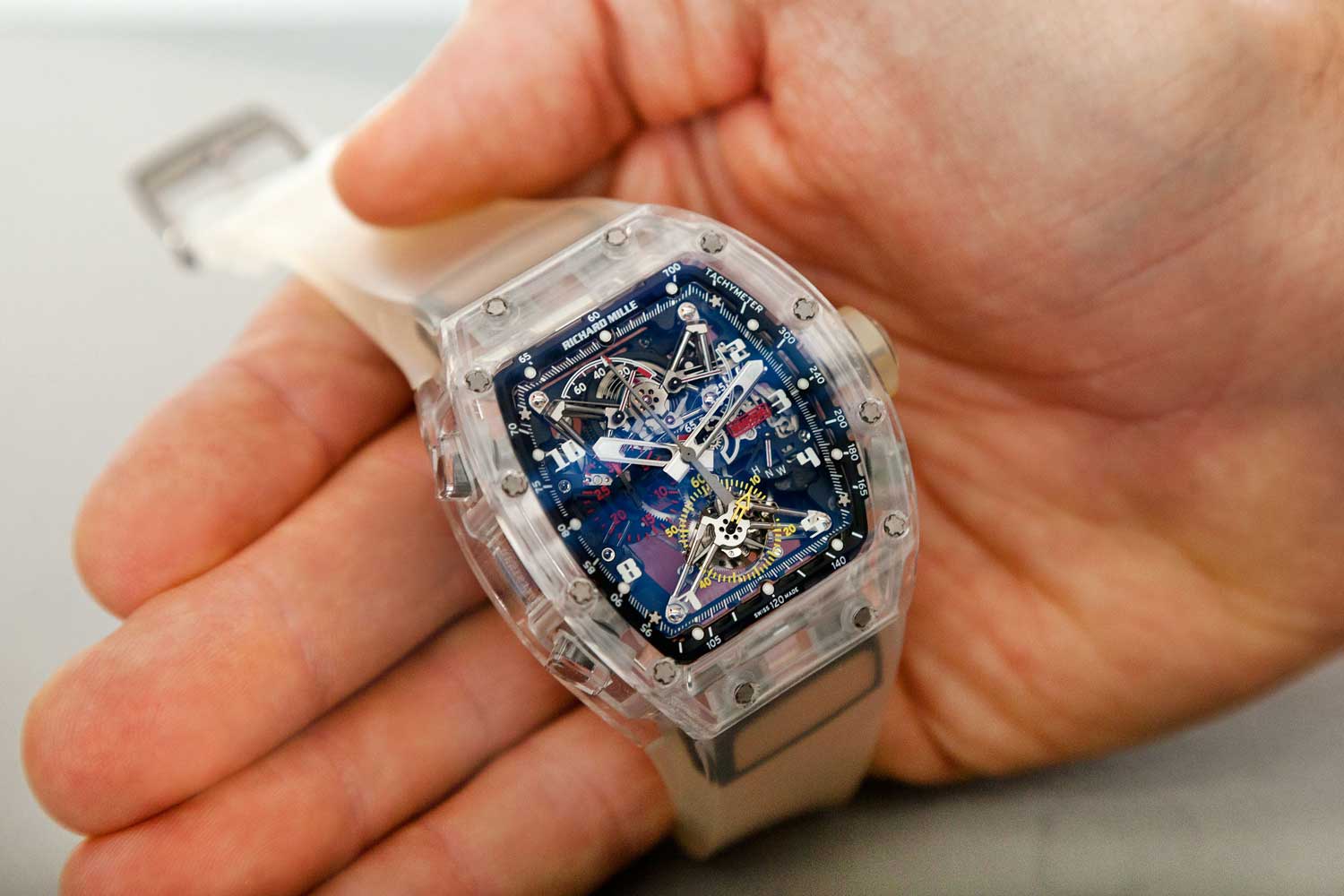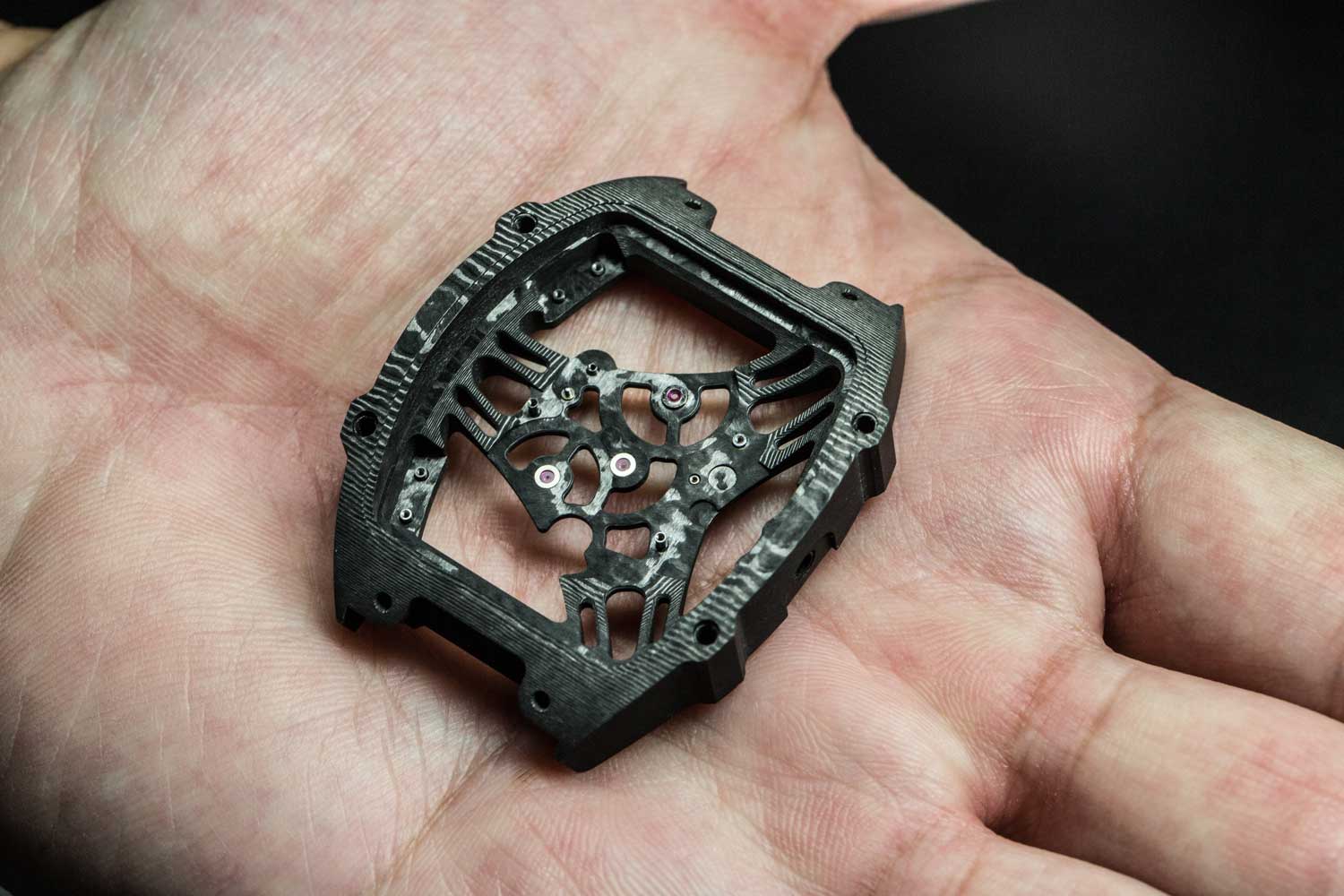Reviews
Carbon on Carbon: Richard Mille RM 07-01 & RM 037 Gem-Set NTPT
Reviews
Carbon on Carbon: Richard Mille RM 07-01 & RM 037 Gem-Set NTPT
It’s not just the complications — from torque indicators to automaton magnolias — it goes down to the fundamental way in which the watch movement bridges are sculpted, how its wheels are finished and how the movement architecture is conceived as a whole.
But, how many have ever taken time to really examine the exterior casing of a Richard Mille watch? Because, while it is common knowledge that the Richard Mille case is one of the most difficult watch cases in the industry to produce, until the moment you’ve taken time to lay eyes on every exposed curved surface of the watch (which is, incidentally, all of its surfaces), you will never be able to fully appreciate the challenge that ProArt — Richard Mille’s case-making facility — must face on a daily basis to create these magnificent horological envelops.
However, the challenge of case production, it seems, has never been a cause of concern for Richard Mille the man. Since the day he dreamt up the RM 001 on a page in his sketchbook, his watches have been pushing the boundaries of case construction and materials usage.

The Richard Mille RM 001 Tourbillon
Revolution in Aesthetics
Beyond traditional precious metals, Richard Mille was probably one of the very first few watchmakers in the market to have been so serious about ceramic and carbon composites for his cases. It was he who added terms like “Ceramic TZP-N”, “translucent composite” and “injected carbon nanotubes” into the average watch geek’s vocabulary.
Then, as he is always known to do, Mille turned things all the way up to eleven by introducing the RM 056, the brand’s first — and possibly one of horology’s first — foray into an all-sapphire-cased watch. A more recent case-material innovation, however, is Mille’s use of the material known the world over as Carbon TPT®.

Richard Mille RM 056 Prototype No. 2 at Christie's 2017 NY sale
Of course, this has proven itself again to be no point of hindrance. Because not only have the number of Richard Mille watches that come in Carbon TPT® increased, but the material itself has also been developed into various new forms — for example, the mix of Carbon TPT® and Quartz TPT®, which was used for the case of the RM 27-02 Tourbillon Rafael Nadal, or Gold TPT®, a combination of Carbon TPT® and Quartz TPT® with alternating layers of gold leaf, none of which are more than 10 microns thick.

RM27-02 caseband and unified baseplate formed from Carbon TPT®
Take, for instance, the RM 07‑02 Automatic Pink Sapphire. Here was an interpretation of an all-sapphire watch that could only be dreamt up by someone like Richard Mille. Then, this year, Mille gives the world the RM 07-01 and RM 037, which take the innately harsh industrial masculinity of Carbon TPT® and turn it into feminine elegance.
Considering how difficult it already is to forge the Richard Mille case from Carbon TPT®, this does beg the question of how much more difficult it must be to diamond-set the material. The good thing is that just after SIHH this year, we had the privilege of dropping by Richard Mille’s Valgine and ProArt facilities, where we got all our burning questions answered.
Carbon that Shines
So, to start, we asked, how does one even dream up the idea to dress such a technical material as Carbon TPT® with diamonds? And thus, it was explained: In the beginning, there was a vision for what Richard Mille wanted to create and so the team started to experiment and eventually found the right formula. While conducting the tests, the resultant appearance was really otherworldly. Two totally different forms of the carbon together brought the concept of jewelry watches to an almost philosophic level of discussion. Richard Mille himself was sold; the watch had to made. And so, the team set out to work out the details. In the process, they also recognized that this was the perfect approach to introducing Carbon TPT® into their ladies’ collection.
The process of setting the diamonds is dependent on the stone shape, type and size. The front bezel alone takes about three days from preparation to final stage, excluding preparing the stones. Don’t forget now that the dials of the two watches in question are diamond-set as well.
Regarding the setting technique, we were told that setting diamonds on Carbon TPT® is an exceptional technical achievement for Richard Mille. It is actually much more time-consuming and costly in comparison to the traditional methods of setting classical precious metals.
This approach ensures that the diamonds themselves need not be prepared in some novel way in order to set them on to Carbon TPT®. The stones are, in fact, of similar shape and size specifications to what you would find in any other stone-set Richard Mille watch. All the diamonds used have undergone scrutiny within Richard Mille’s labs to be evaluated for quality (purity, color and size), to ensure that standards are met as per the brief, and that all the diamonds are natural stones.
The precision that is required to create the holes is a matter of tolerances measured in microns. Thereafter, the insertion of the jewel holder, and the difficulty of making any kind of small adjustments, make for a craft that is not for the faint of heart. Rating the difficulty of the process when compared to gem-setting traditional precious metals, on a scale of one to 10, we were given a clear nine without hesitation.
But, where to from here? How can Richard Mille possibly go on pushing technical and creative boundaries, while creating watches that blend space-age materials with age-old decorative techniques, such as in the case of the RM 07-01 and RM 037? Without giving too much away, it can be said with some confidence that the brand is constantly looking to develop its feminine watches and to stretch its overall watchmaking know-how.










